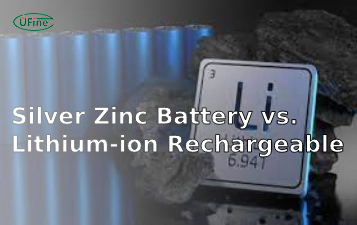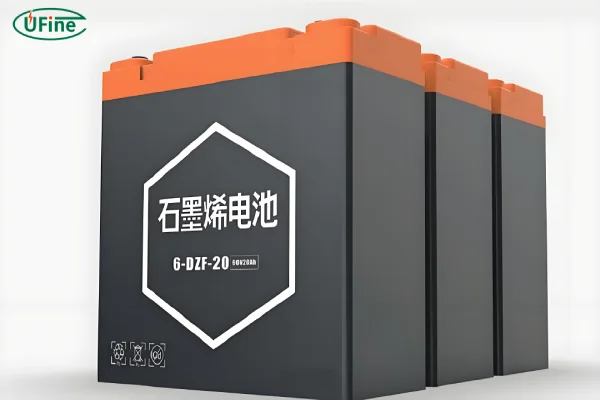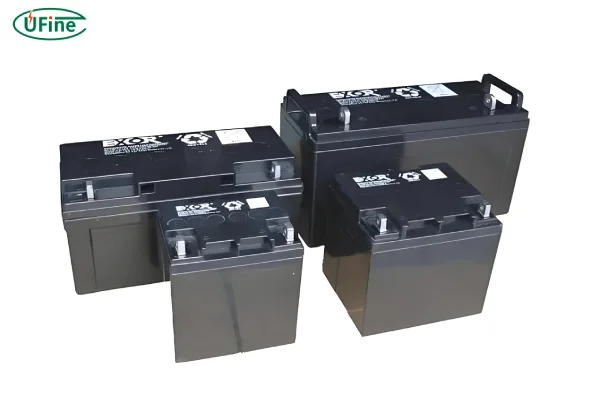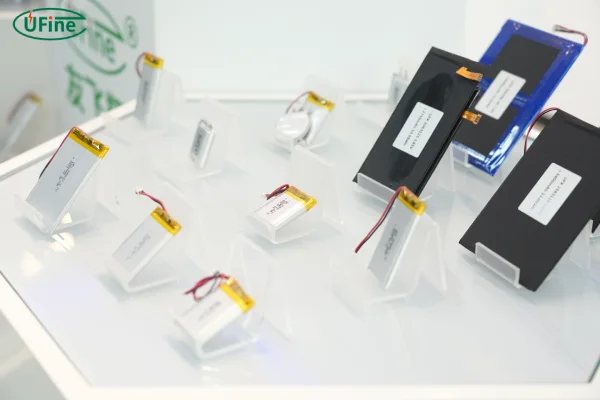
Choosing the right battery can be a daunting task with so many options available. Whether you’re powering a smartphone, car, or solar panel system, understanding the differences between graphite, lead acid, and lithium batteries is essential. In this detailed guide, we’ll explore each type, breaking down their chemistry, weight, energy density, and more. By the end, you’ll have a clearer picture of which battery is right for you.
Part 1. Chemistry
Battery chemistry defines how energy is stored and released, impacting performance and efficiency.
Graphite Batteries
Graphite batteries utilize carbon in the form of graphite as an electrode. This structure provides a stable and efficient way to transfer charge. Graphite acts as a host for ions, allowing them to move freely during charging and discharging. This makes these batteries a promising option for future energy storage solutions, though they are still emerging in the market.
Lead Acid Batteries
Lead acid batteries are one of the oldest and most established battery types. They consist of lead dioxide for the positive plate and sponge lead for the negative plate, with sulfuric acid as the electrolyte. This combination is robust and reliable, making it a common choice for automotive and backup power applications. However, the chemistry can lead to issues like sulfation if not properly maintained.
Lithium Batteries
Lithium batteries, known for their high energy density, use lithium compounds for the electrodes. The chemistry allows for a lightweight and compact design while offering powerful energy storage. They are incredibly versatile and are used in everything from smartphones to electric vehicles. The efficiency of lithium batteries is unmatched, but they require careful management to prevent overheating.
Part 2. Weight
The weight of a battery affects its portability and application.
Graphite Batteries
Graphite batteries strike a balance between weight and capacity. They are lighter than lead acid batteries but generally heavier than lithium batteries. This makes them suitable for applications where weight is a consideration but not the primary concern.
Lead Acid Batteries
Lead acid batteries are known for being heavy. The lead components contribute significantly to their weight, which can be a drawback for portable applications. However, in situations where the battery remains stationary, like in cars or backup systems, the weight is less of an issue.
Lithium Batteries
Lithium batteries are the lightest among the three types. Their lightweight nature combined with high energy density makes them ideal for portable electronics and electric vehicles. The reduced weight contributes to overall efficiency, especially in applications demanding mobility.
Part 3. Energy density
Energy density is a critical factor in determining how much power a battery can store relative to its size.
Graphite Batteries
Graphite batteries offer a good balance of energy density, making them efficient for moderate power applications. They provide a middle ground, offering reasonable storage without the bulk.
Lead Acid Batteries
Lead acid batteries have the lowest energy density among the three types. This means they require more space to store the same amount of energy, making them less efficient for applications where space is limited.
Lithium Batteries
Lithium batteries excel in energy density, offering the highest storage capacity per unit of weight. This efficiency is why they’re favored for high-energy applications like electric vehicles and portable electronics.
Part 4. Cycle life
The cycle life of a battery indicates how many times it can be charged and discharged before losing efficiency.
Graphite Batteries
Graphite batteries have a moderate cycle life, making them a durable option for regular use. They strike a balance between longevity and performance.
Lead Acid Batteries
Lead acid batteries typically have a shorter cycle life compared to the other types. They require regular maintenance to extend their lifespan, such as ensuring the electrolyte levels are adequate.
Lithium Batteries
Lithium batteries boast a long cycle life, often lasting thousands of cycles. This longevity makes them cost-effective over time, despite their higher initial cost. They require minimal maintenance, adding to their appeal.
Part 5. Safety
Safety is a paramount concern when choosing a battery.
Graphite Batteries
Graphite batteries are generally safe, with stable chemistry that minimizes risks. They are less prone to issues like leaking or overheating.
Lead Acid Batteries
Lead acid batteries require careful handling due to the sulfuric acid electrolyte, which can be hazardous if leaked. They need regular monitoring to prevent problems like overcharging.
Lithium Batteries
Lithium batteries have advanced safety features, including protection circuits to prevent overheating and overcharging. While they are safe for everyday use, mishandling can lead to thermal runaway, a risk that manufacturers mitigate with technology.
Part 6. Price
The cost of a battery can significantly impact decision-making.
Graphite Batteries
Graphite batteries are moderately priced, offering a balance between cost and performance. They are a viable option for those looking for efficient energy storage without the premium price tag of lithium batteries.
Lead Acid Batteries
Lead acid batteries are often the most affordable choice. Their low cost makes them attractive for budget-conscious applications, although ongoing maintenance can add to the total expense.
Lithium Batteries
Lithium batteries are generally the most expensive. However, their high performance and long lifespan often justify the cost, especially in applications where efficiency and reliability are crucial.
Part 7. Applications
Each battery type has specific applications where it excels.
Graphite Batteries
Graphite batteries are used in emerging technologies and energy storage systems. They hold promise for future applications that require stable and efficient power.
Lead Acid Batteries
Lead acid batteries are common in automotive applications, uninterruptible power supplies (UPS), and renewable energy systems. Their reliability and low cost make them a staple in these areas.
Lithium Batteries
Lithium batteries power a wide range of devices, from smartphones and laptops to electric vehicles and renewable energy storage. Their versatility and high performance make them a preferred choice for modern technology.
Part 8. Pros and Cons comparison
Here’s a detailed comparison table highlighting the pros and cons of each battery type:
| Feature | Graphite Batteries | Lead Acid Batteries | Lithium Batteries |
|---|---|---|---|
| Portability | Moderate | Low | High |
| Maintenance | Low | High (requires regular checks) | Low |
| Environmental Impact | Moderate | High (due to lead) | Lower |
| Temperature Range | Moderate | Narrow | Wide |
| Initial Cost | Moderate | Low | High |
| Disposal | Easier | Challenging (toxic components) | Moderate |
| Charging Speed | Moderate | Slow | Fast |
Part 9. How to choose?
Selecting the right battery involves considering several key features and your specific needs.
Features of a Good Battery
A good battery should have high energy density, long cycle life, and excellent safety features. It should also be cost-effective and require minimal maintenance. Environmental impact and ease of disposal are also important considerations.
How to Choose the Right Battery
-
Analyze Your Needs: Determine what you need the battery for. Are you powering a vehicle, a device, or a home energy system?
-
Consider Weight and Size: If portability is important, opt for a lighter battery like lithium.
-
Evaluate Energy Needs: For high-energy applications, lithium is often the best choice.
-
Budget Considerations: Balance the initial cost with long-term expenses, such as maintenance and replacements.
-
Safety Requirements: Ensure the battery has adequate safety features for your application.
-
Environmental Impact: Consider the environmental implications of your choice and opt for more sustainable options if possible.
By understanding these aspects, you can make an informed decision that aligns with your specific requirements and preferences, ensuring optimal performance and satisfaction.
Related Tags:
More Articles

What is the Difference Between Silver Zinc Battery vs. Lithium-ion Rechargeable?
Compare silver zinc and lithium-ion rechargeable batteries: energy density, cycle life, safety, cost, and uses in drones, medical devices, EVs, and electronics.
What are Watts and Watt Hours in Battery?
Understand watt vs watt-hour in batteries: key differences, how to calculate capacity, and why they matter. Includes free comparison table.
Best 10 Blood Pressure Monitor Battery Review: Finding the Most Reliable
Are you looking for a reliable Blood Pressure Monitor battery? Here is a complete guide with the top 10 best blood pressure monitor batteries.
Bluetooth Headphone Battery Guide: All You Need to Know
Maximize headphone battery life with expert tips! Learn how to charge, check, troubleshoot, and choose the best bluetooth headphone battery in 2025.
LiFePO4 Battery VS. Lithium-ion Polymer Battery: Which One Is Best?
Comprehensive comparison of LiFePO4 vs Lithium Ion Polymer batteries: energy density, safety, lifespan, cost. Find out which battery suits your needs in 2025.






